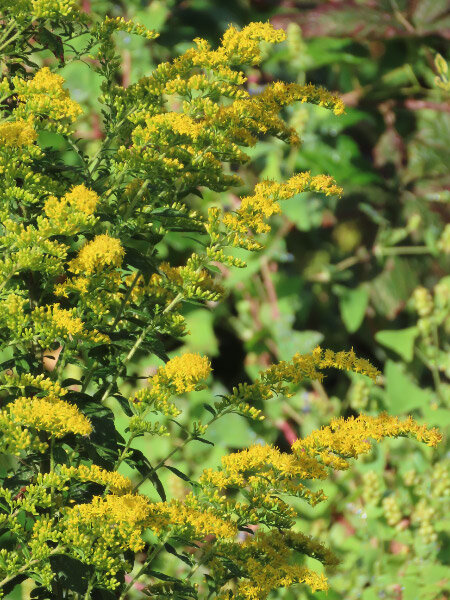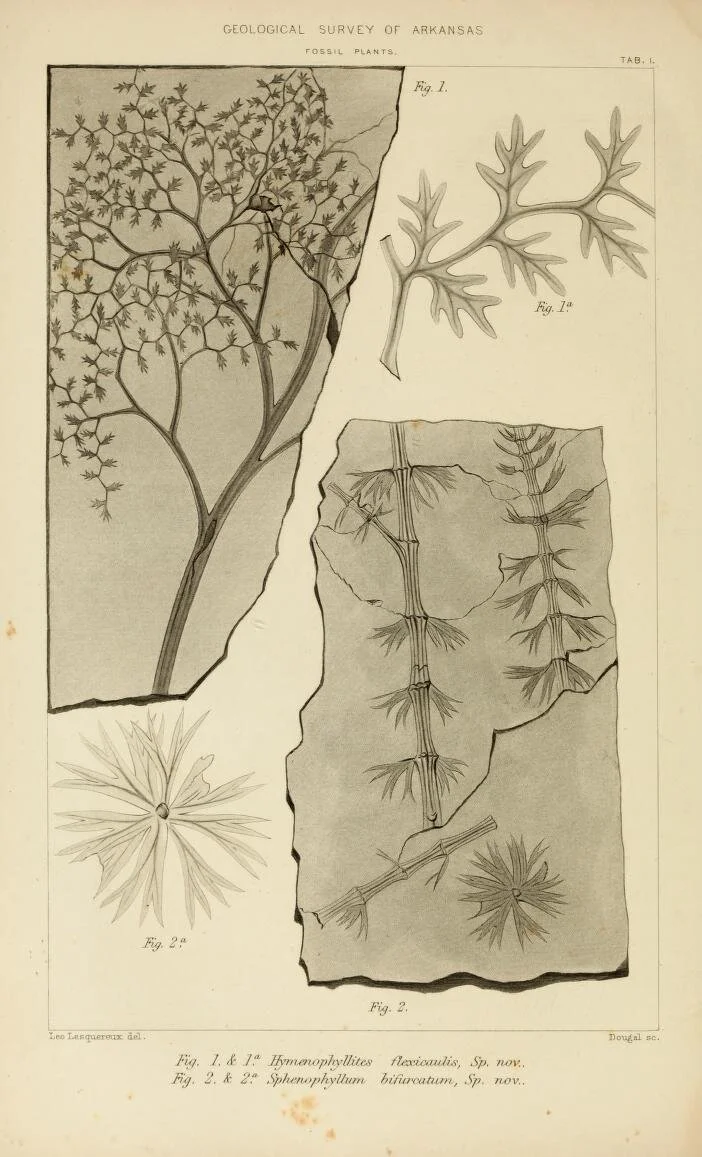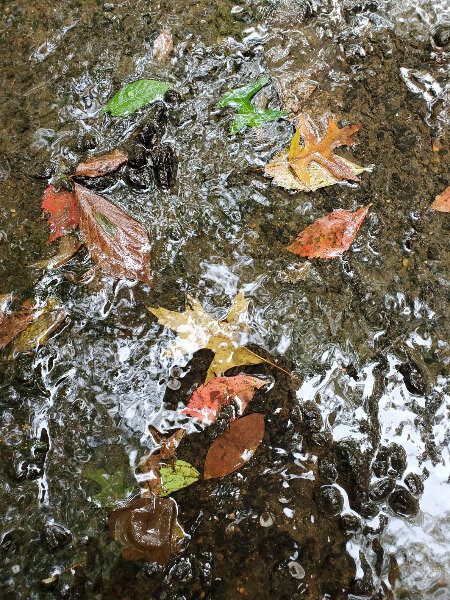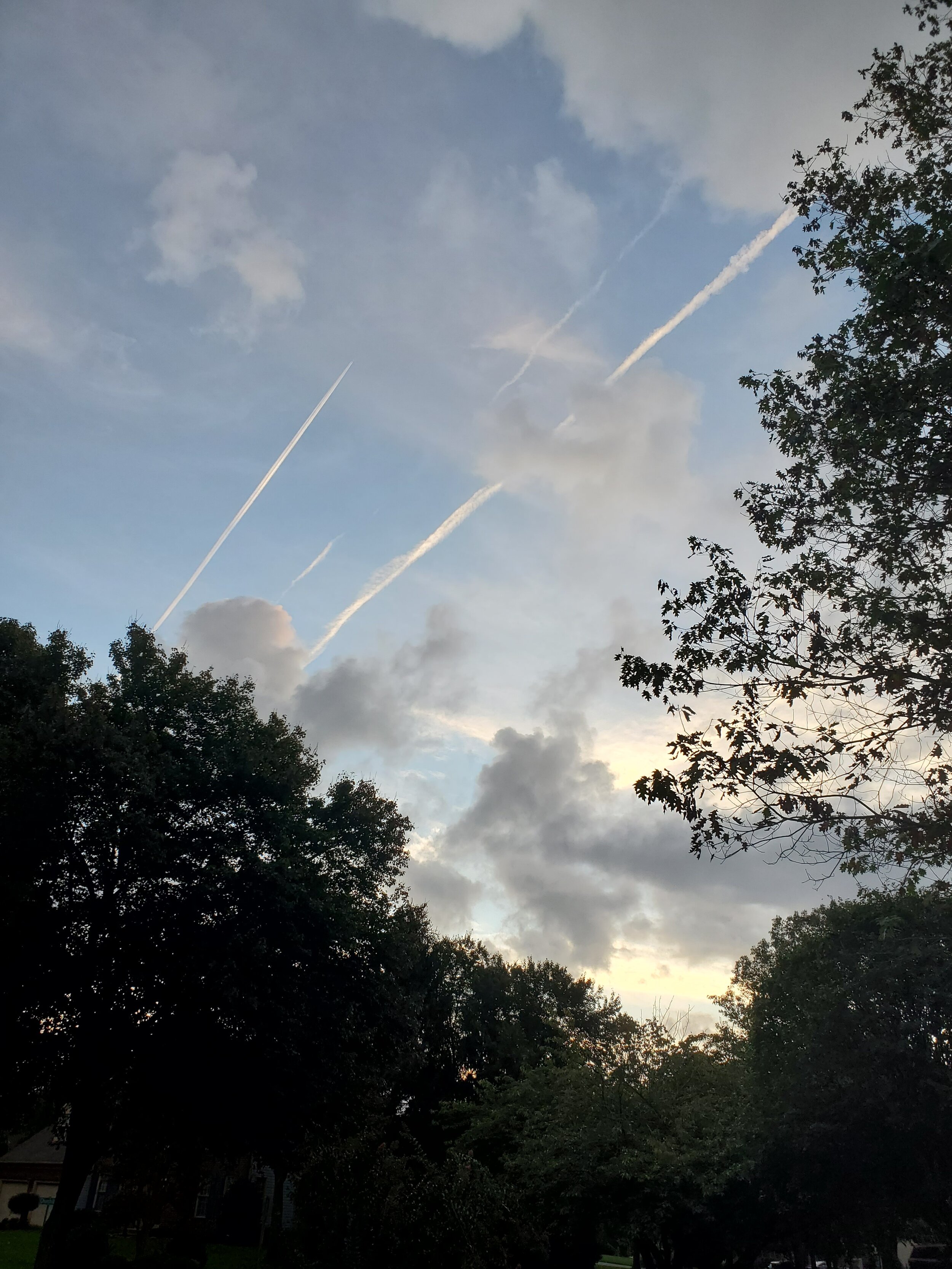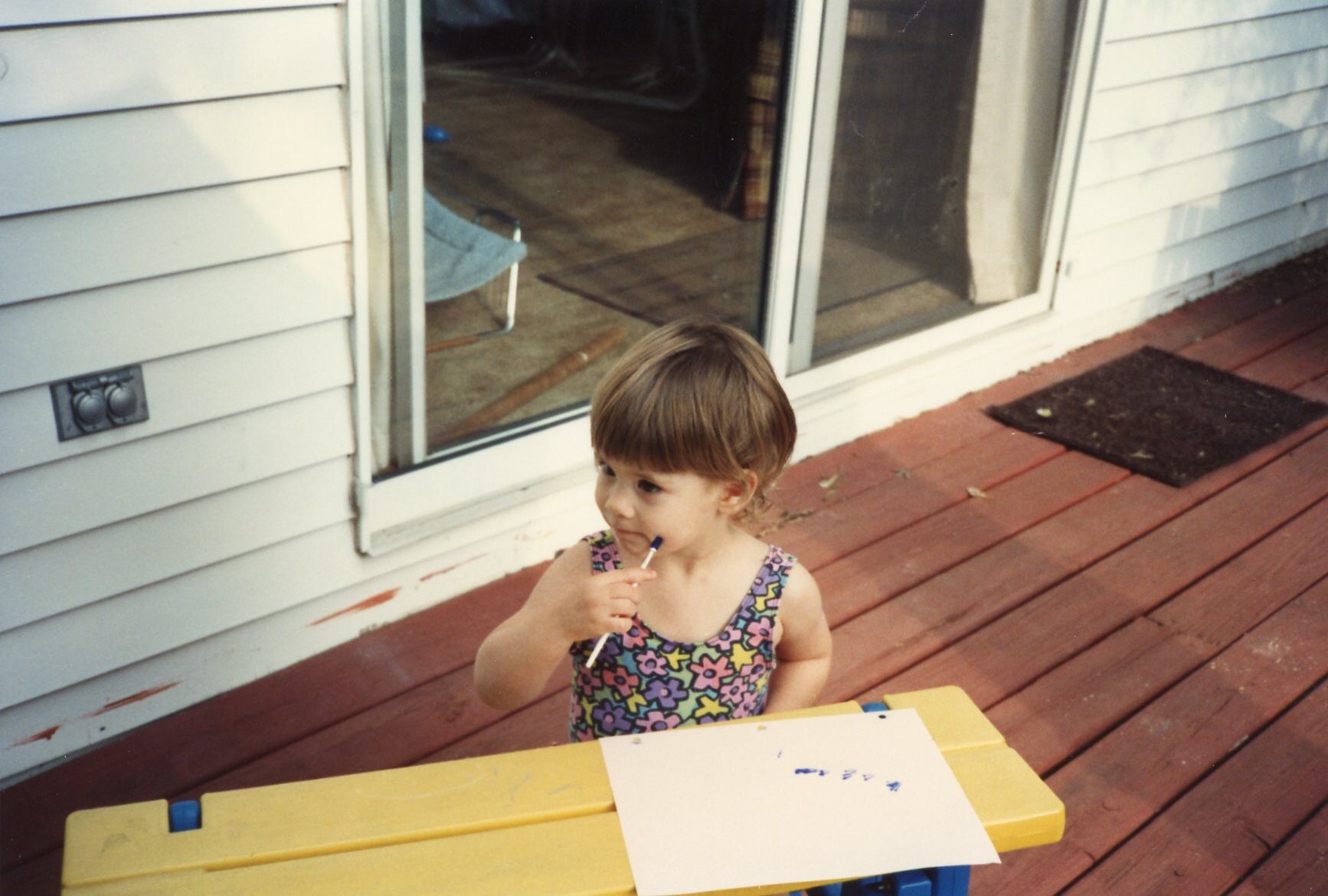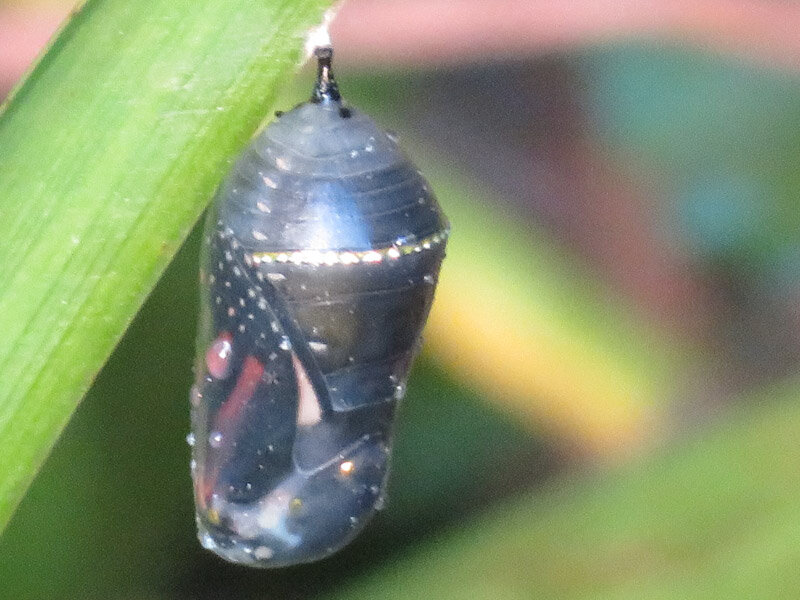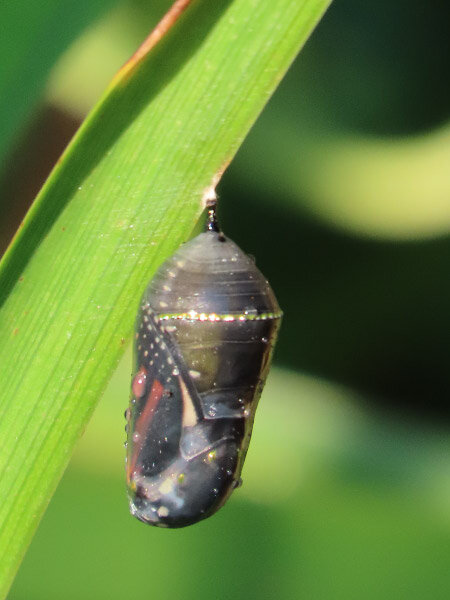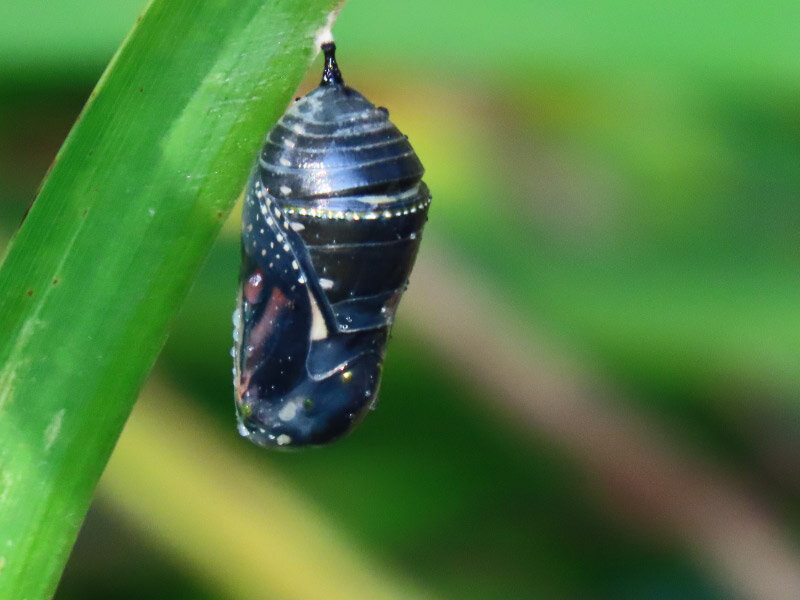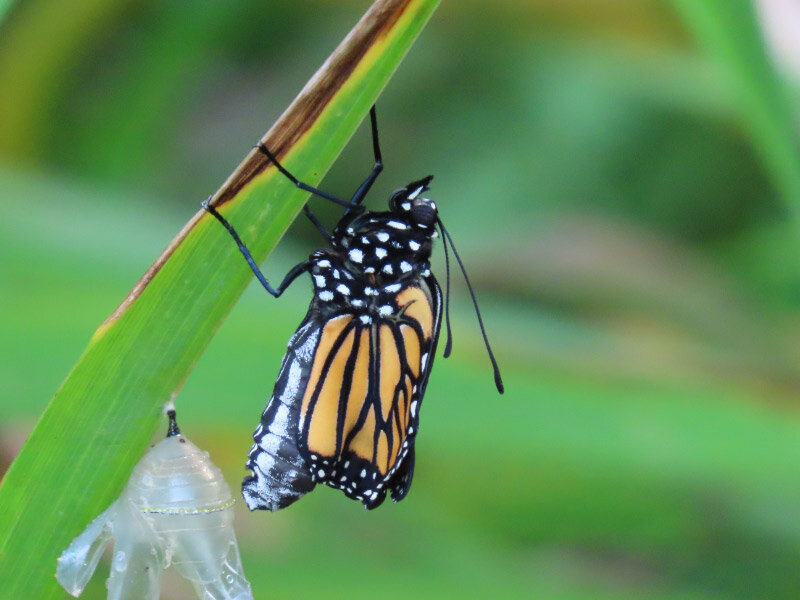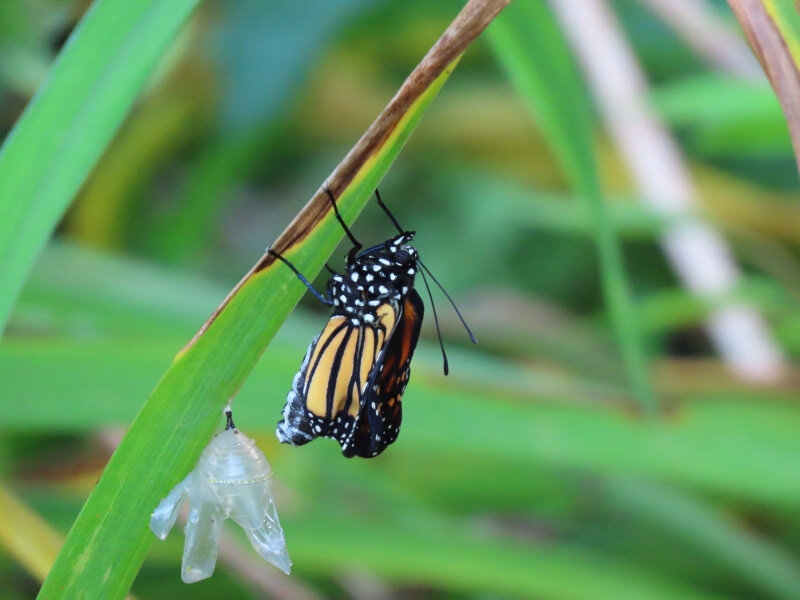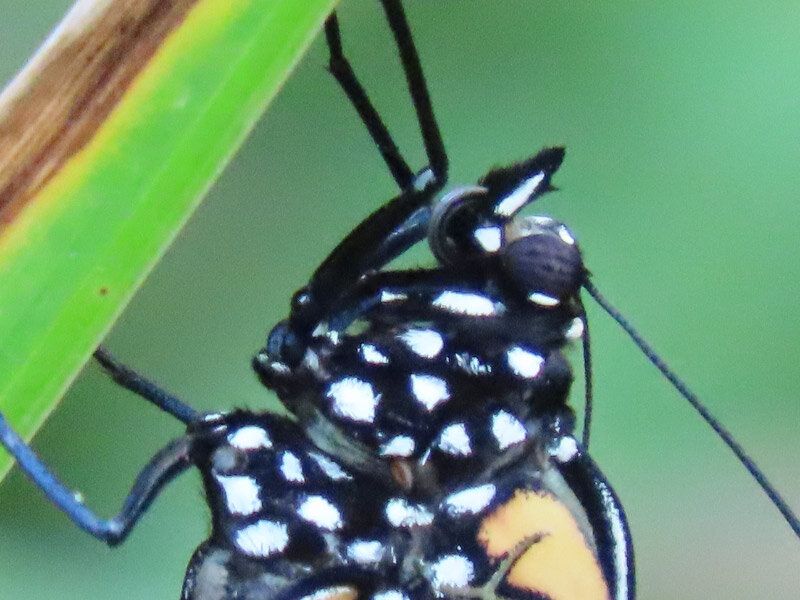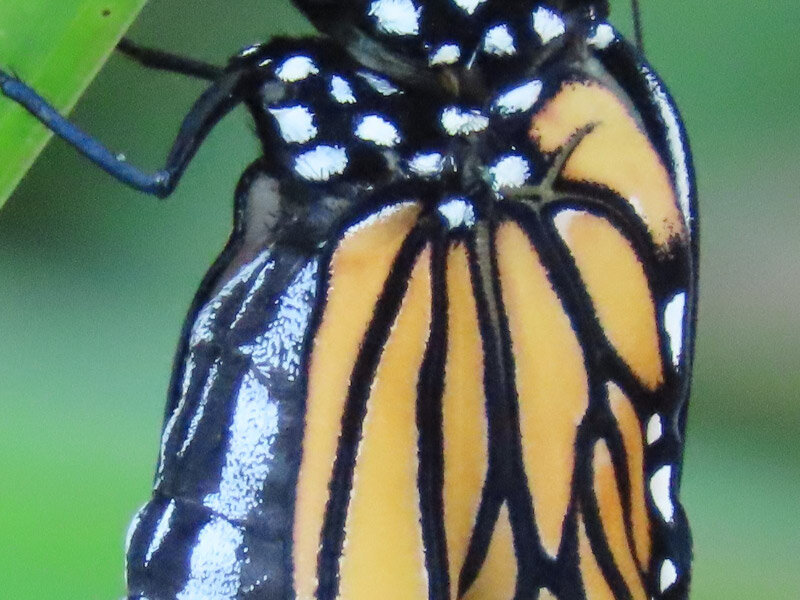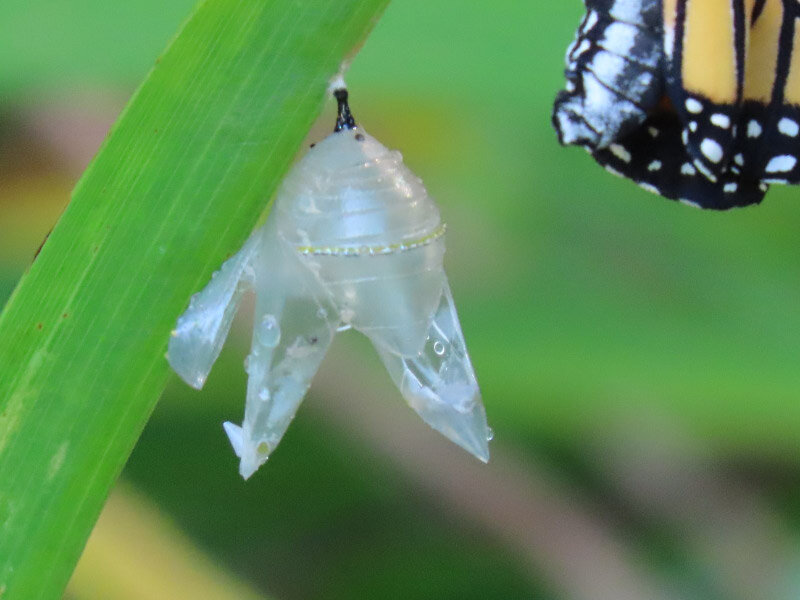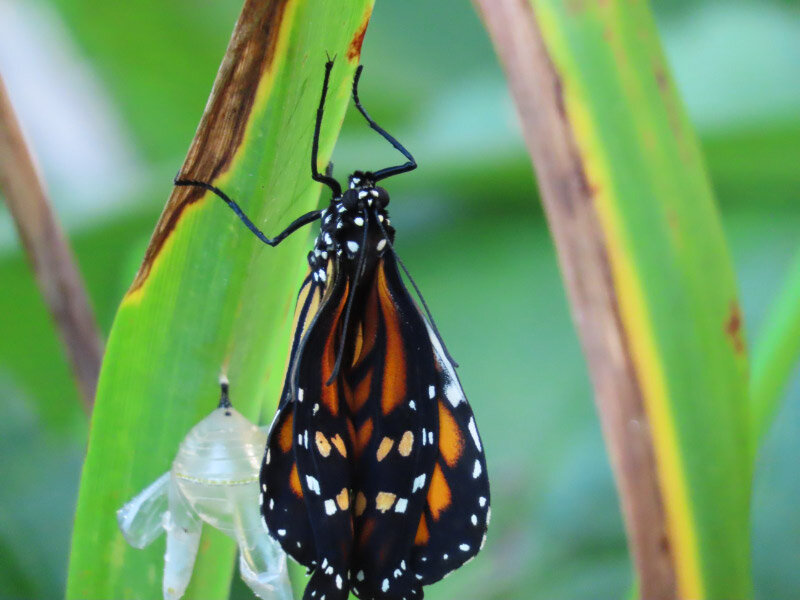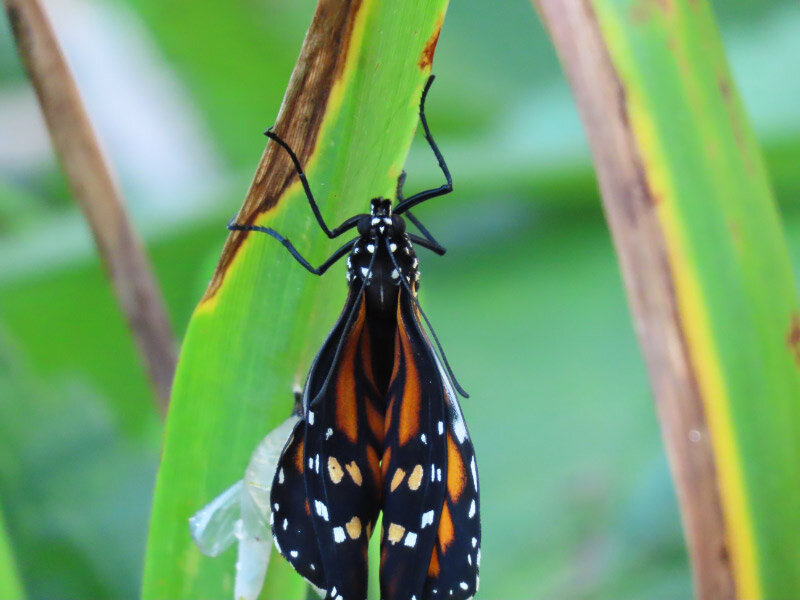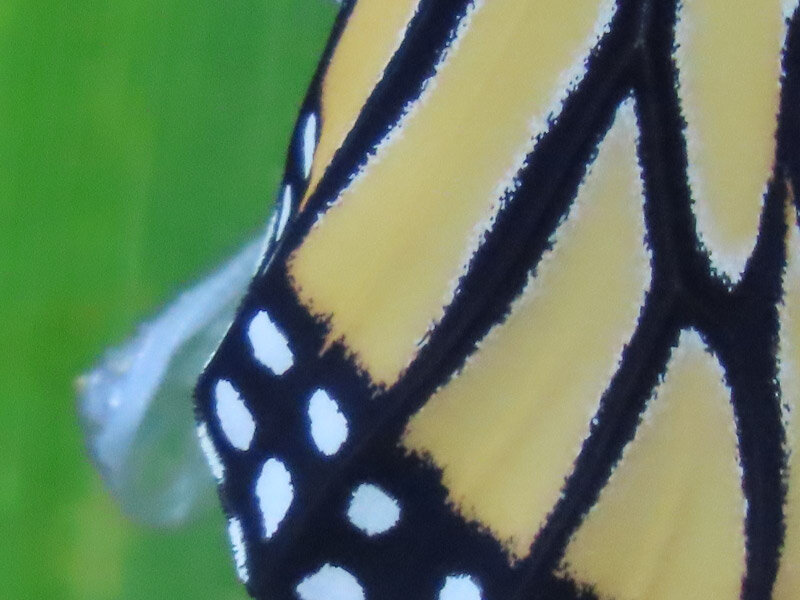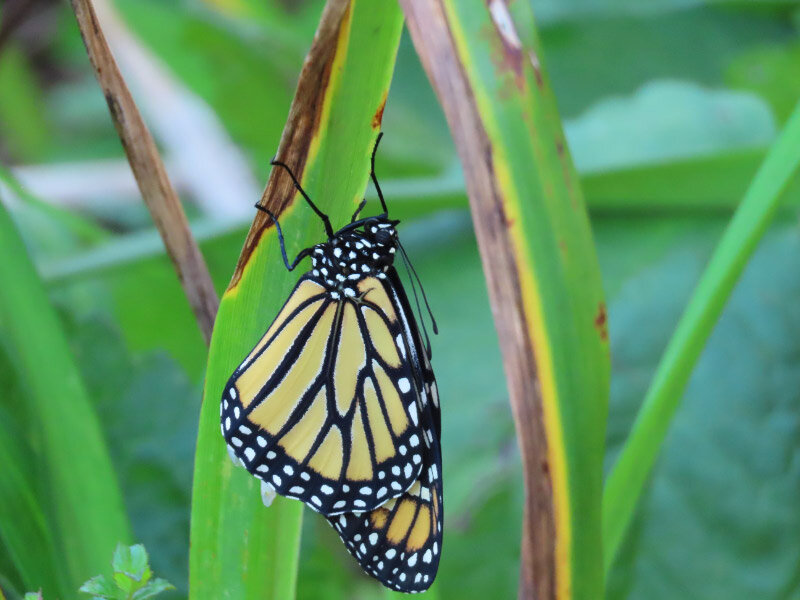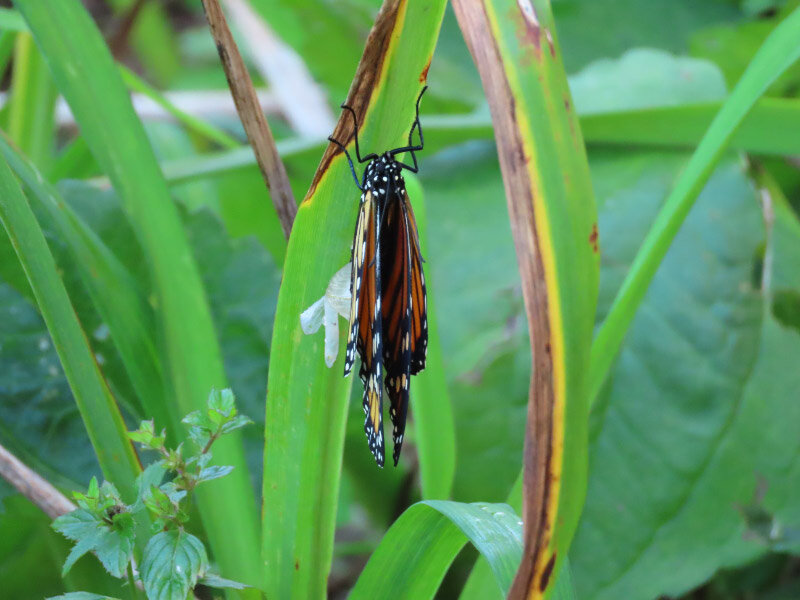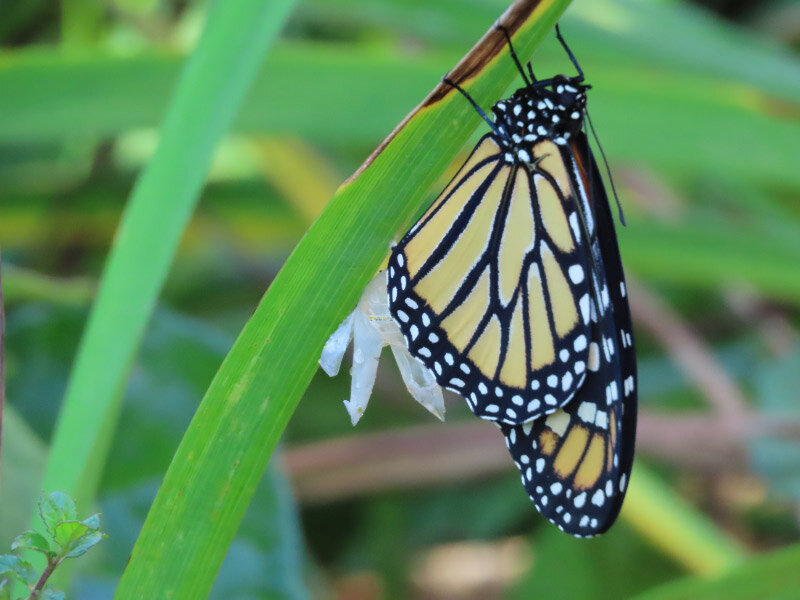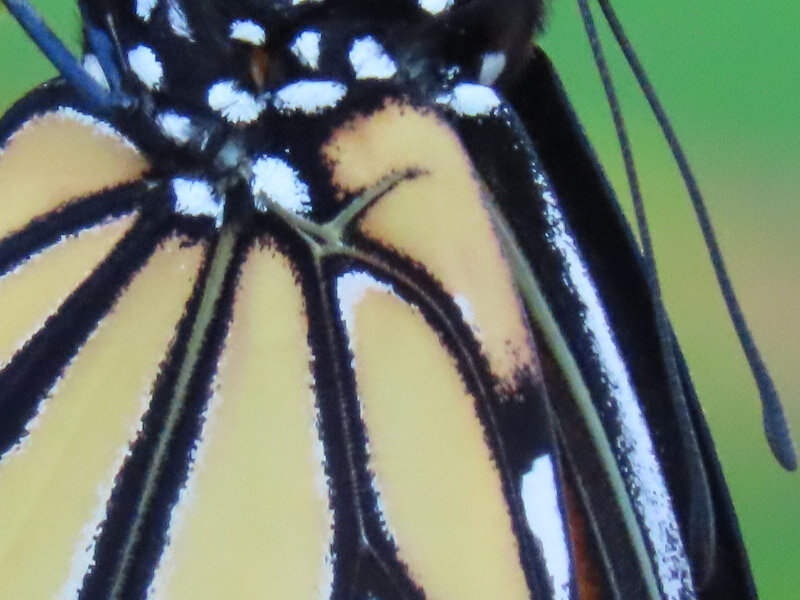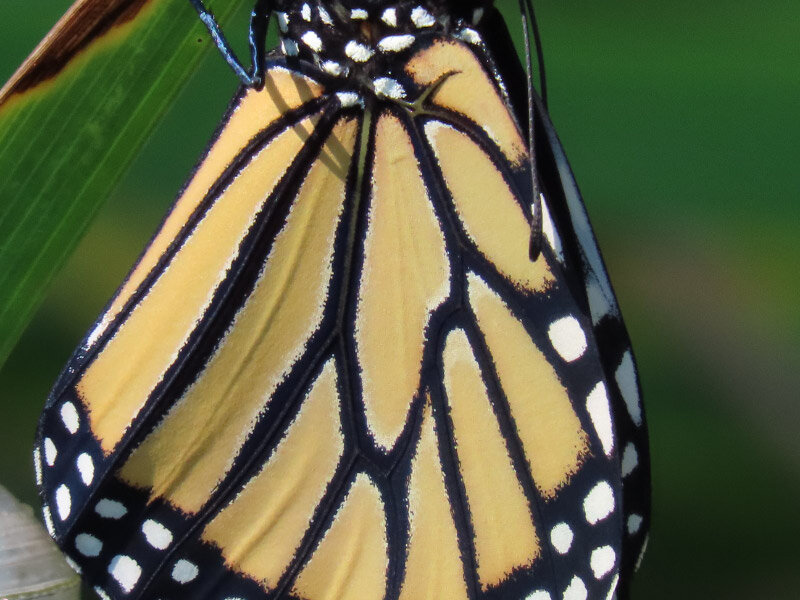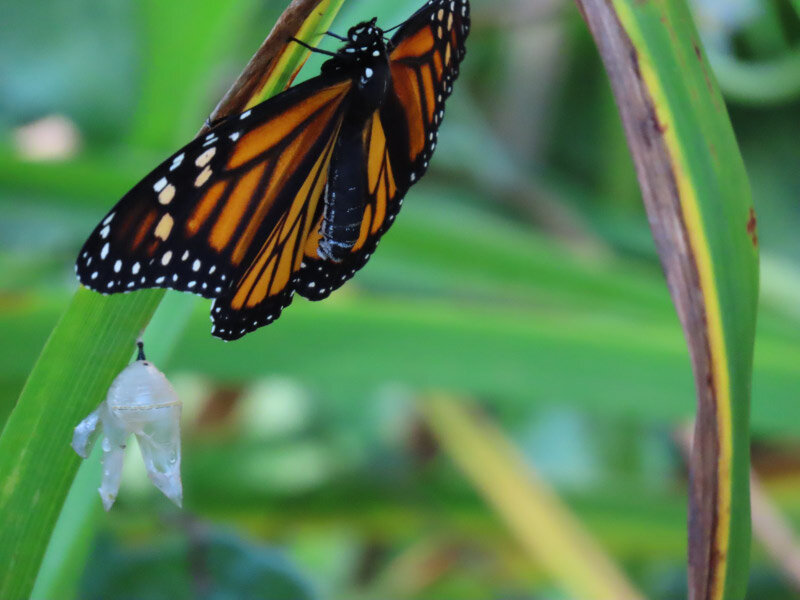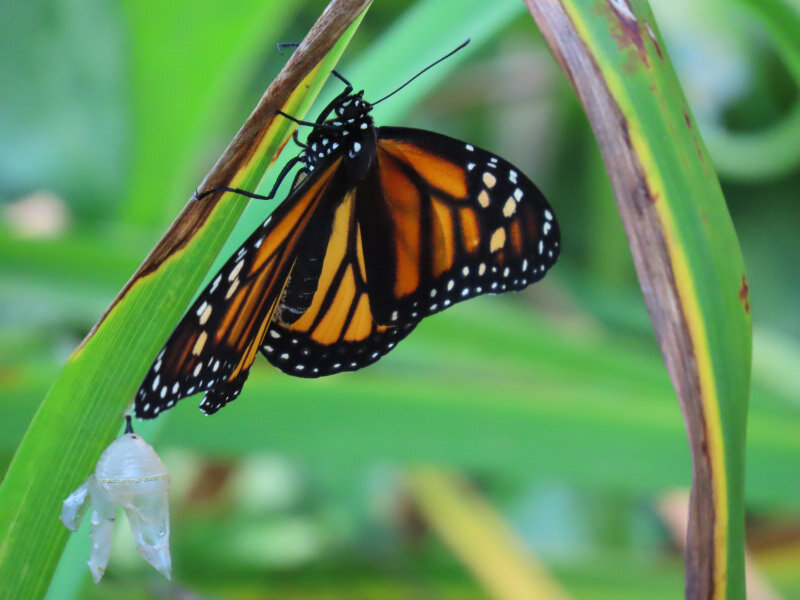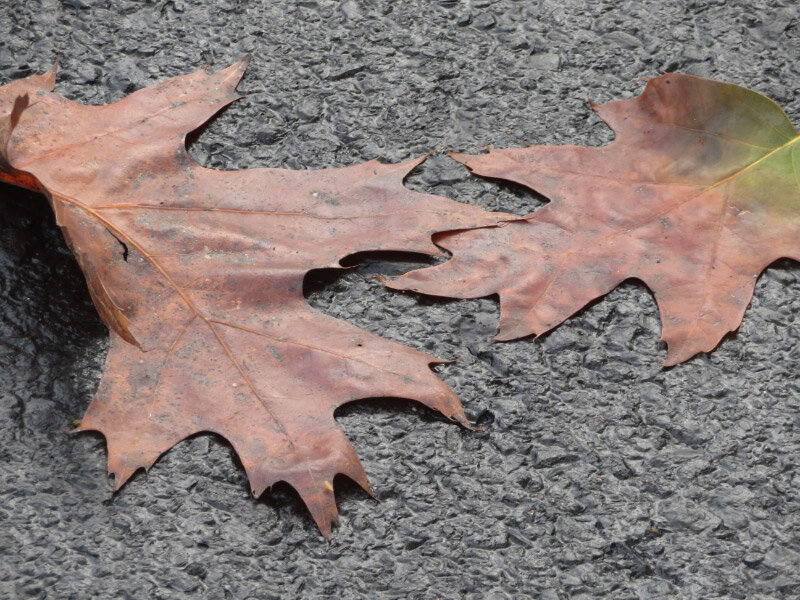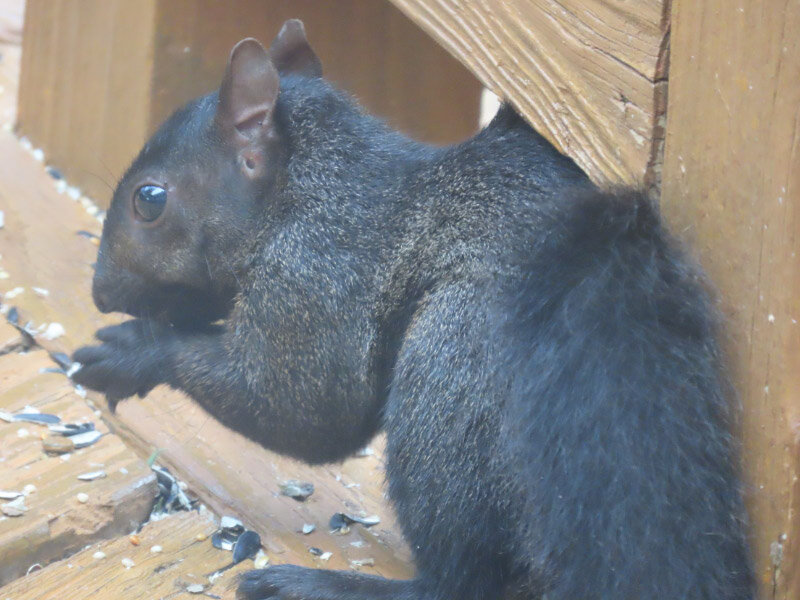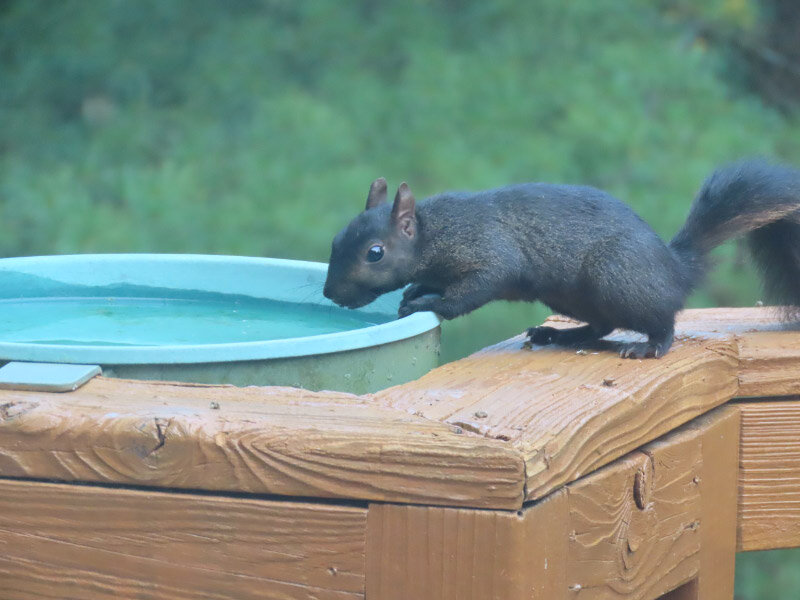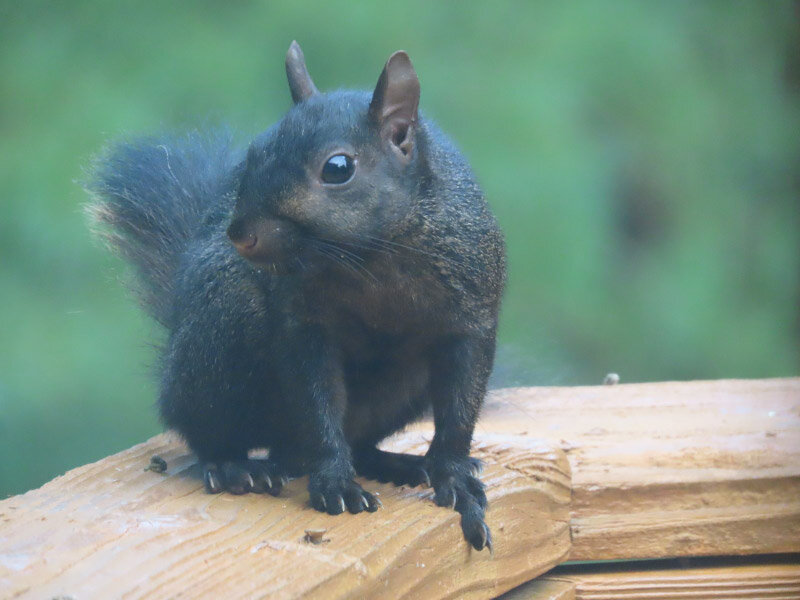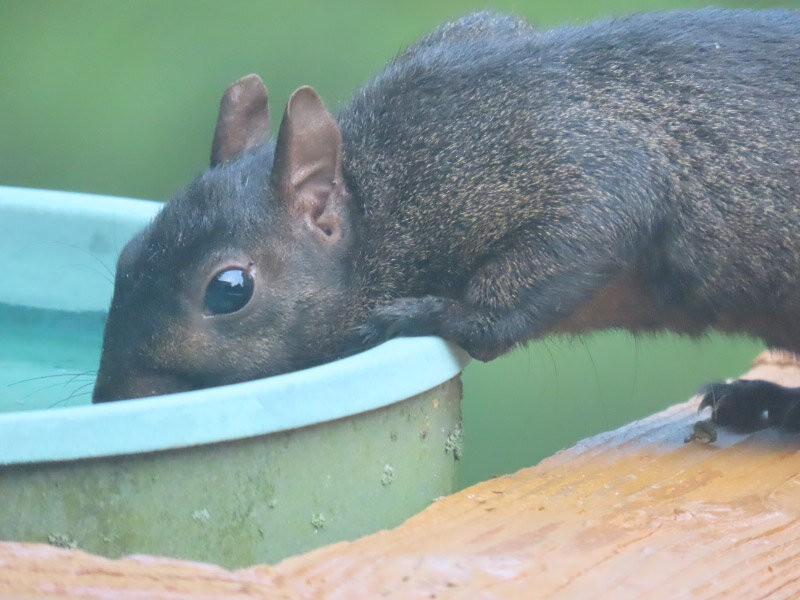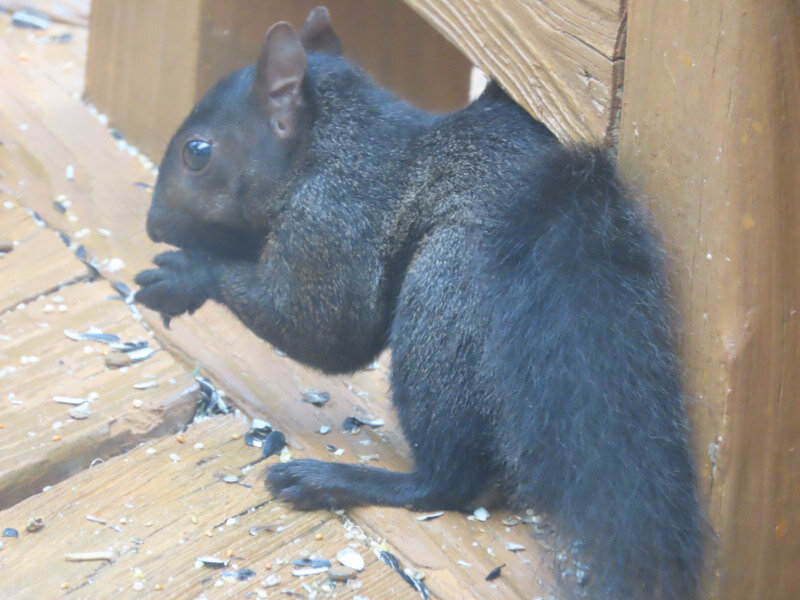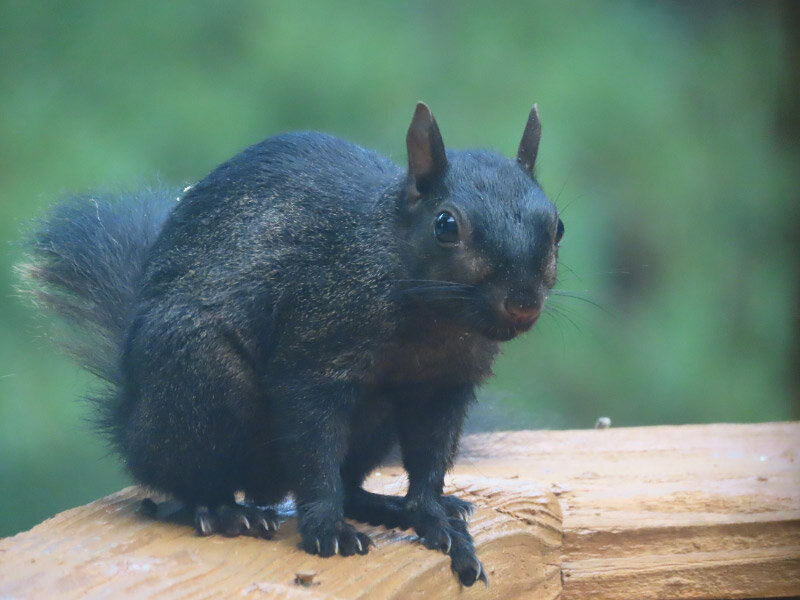Neighborhood Walk
/It’s early fall in our neighborhood. There are a few leaves that are turning and falling. I found a pretty one at the base of our oak at the very beginning of my walk. The tree is struggling with the infection that is impacting (eventually killing) many oaks in our area and has already dropped about half its leaves. It will linger for a few more years. The one across the street has lost almost all its leaves already and I wonder if it will not survive the winter.
As I walked toward the storm water pond, I noticed another oak that was mostly green…except for one branch of yellow leaves.
The pond was too peaceful and quite – no frogs or red-winged blackbirds making morning songs, no turtles coming out to warm up in the sunshine. There was no algae or floating water plants and I wondered if the treatment used to control that ‘problem’ killed the other life in the pond. They are not mowed as far down the slope as they did at one time, but it seems like it would be better to let the vegetation grow a little further up the slope.
There were plants going to seed…some with candelabra type branches supporting their fluffy seeds.
There were two types of goldenrod. Do you see the out-of-focus bee at the right side of the second picture? I didn’t notice it until I got home and looked at my images on a big screen….glad I captured the image since it shows the value of these late blooming plants to pollinators.
The willow has a tall branch that is dead – lower ones that are still green with slender branches gracefully sweeping the bank and hanging over the water. There are shelf fungus growing up and down the dead trunk.
There are a few plants still blooming. One was down in the grass and the picture I took looks like it has an arching fuzzy boa spilling from the flower! In reality the fuzzy boa is an out-of-focus grass seed stalk.
One of the houses has several Rose of Sharon buses planted on the pond side of their fence. I liked the extra wrinkles of the purple one (not completely unfurled).
The milkweed stand at the back of the pond was a disappointment. It was still there was overgrown with invasive pear seedlings that have grown rapidly over the summer. Maybe they will mow the area later in the fall to try to control that invasion for next season although the pear will come up from roots as well as the milkweed.
Overall – a worthwhile walk on a coolish weekend morning before many other people were out in the neighborhood.






